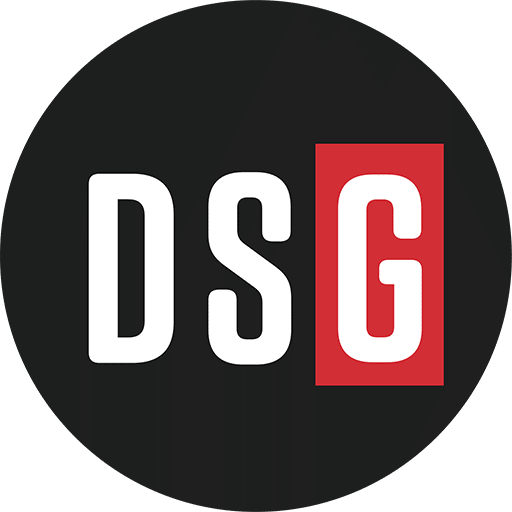Our conversation with Wes Smith is now available on-demand. Watch now.
Wes Smith started his career in the Air Force and says it was the best thing he ever did. “I went through electronics school in the Air Force, my career field was secure communications. I was in Datacomm before Datacomm became a thing.”
Smith spent over 37 years at Mayer Electric Supply, first as a warehouse associate, then internal auditing and quality assurance. He became Mayer’s first CIO in 2000, then executive vice president and COO and finally president. Now Smith guides the National Association of Electrical Distributors (NAED) as president and CEO.
Recently, Smith was awarded the Bernard H. Falk Award from the National Electrical Manufacturers Association (NEMA). The award recognizes outstanding achievement in technology, management, marketing, international trade, education, public affairs and other fields important to the electro-industry.
Ian Heller and Jonathan Bein spoke with Smith about the key challenges facing the electrical industry.
Jonathan Bein: What are some of the initiatives that NAED is embarking on?
Wes Smith: NAED has historically focused on conferences, facilitating industry collaboration, communication, education, and research/benchmarking. We have a dedicated educational group with instructional designers and maintain EPEC as the gold standard common body of knowledge. We also serve as a communication vehicle through TED Magazine, our website and newsletters, while conducting cutting-edge research through our NAED Education and Research Foundation (NERF).
When I joined NAED, the existing strategic plan wasn’t evolving as fast as the industry. We needed a plan that stayed relevant with the industry’s rapid changes. We involved every associate at NAED to identify the major challenges in our industry and how we could address them. This led to the creation of a more focused strategic plan with pillars that include:
- Electrification: We’ve identified electrification as a major industry driver and have hired someone in D.C. to ensure we have a voice in advocacy related to this transformation.
- Digitalization: Our “Next Level Now” campaign focuses on how NAED can lead in areas like supply chain visibility, where traditional methods have fallen short.
- Workforce Development: We are addressing the knowledge gap caused by the retirement of baby boomers. This involves attracting, recruiting and educating new talent, with a focus on diversity and telling the story of our industry as an exciting and meaningful career path.
- Advocacy: We have historically left government relations and industry advocacy to other industry associations. With the massive investments in electrification and the workforce imperatives, NAED needs to be at the table. We have hired a government relations expert who will reside in Washington DC and has an office at the headquarters of NECA.
At the heart of workforce development, we live in a time where knowledge is exciting our industry. It’s simple math, it’s simple demography. I’m the last of the baby boomers, it’s 10,000 people like me leaving the workforce every day with their knowledge, and the generation behind me is only replacing us with 7,000. There’s an incongruence.
You can massage the math any way you want to, but how do we help? We’ve got to out-attract. We’re not going to solve the 3,000 people deficit of efficiency and knowledge and education and attracting people. We’ve got a great story to tell with digitalization and electrification to people who have historically not looked at this industry. That this is an exciting place to go, have a career where they can make a good living. I can enjoy what I do. I can make a meaningful difference in the world.
Ian Heller: How does NAED’s new approach differ from traditional industry associations?
Smith: While maintaining our traditional roles, we’re also expanding beyond them. With my 37 years of experience as a distributor, I’m bringing a different perspective to NAED. Our approach now includes a broader focus on delivering value to our distributor members by addressing the industry’s evolving needs.
Heller: How do the new initiatives fit into the changing landscape of industry consolidation?
Smith: Many of the factors we’re addressing, such as education, digitalization and generational change, are also drivers of industry consolidation. NAED’s role is to ensure our members have the tools and resources to compete effectively in this consolidating environment. Additionally, we’re focused on addressing the influx of new competitors who see opportunities in the industry’s inefficiencies.
Heller: People talk about mergers, acquisitions and consolidation all the time but what is often left off the table are conversations about new distributors that are formed every year. What is NAED’s stance on supporting startups and new distributors?
Smith: While consolidation is happening, new startups continue to emerge, often led by individuals who have left companies after acquisitions. These startups typically start with a niche focus and then expand. NAED aims to support and nurture these new companies by providing them with advocacy and the resources they need to succeed.
Bein: Let’s talk about one of the big factors that is going to change the industry. You alluded to it before — electrification. The concept of electrification has been around since the 1800s, one singular example is turning streetlights that are gas-powered into electric-powered. When you think about electrification now, how would you define it to others?
Smith: On one side is generation of energy, the outputs of electricity and the consumption of it, such as an HVAC system or a computer. On the other side, the inputs to the generation of electricity is transforming. We all know solar and wind, and ultimately, nuclear plays a role in there, as controversial as that is. It’s the notion of public power generation, whether large publicly traded, power generation or municipalities and co-ops moving to the off-grid private generation. The inputs are transforming and the consumption of power is transforming.
So as a distributor, I’m looking at what are my solutions? Who are my partners? How do I take advantage of this? What education does my workforce need and what education does my customer need? You start moving through the landscape. We know our grid lacks both capacity and quality. So as a distributor, I’m thinking about who my customers are that help grid infrastructure and it’s the same process. Who are my partners? Who are my customers? What education can I give them? What are my systems and solutions? And I go sell those.
Then the grid gets to the consumer, whether they are industrial, commercial, institutional or transportation. I’m looking at their loads and needs, and consider the solutions I have. My sales force needs to know our partners’ systems and solutions and be able to educate our customers. Distributors need to think about how they can take advantage of electrification from production to consumption.
Bein: Let’s look at generation. One idea that’s out there is the role of microgrids, which is a little bit “Back to the Future,” when companies were producing their own energy. Could you talk to us about microgrids and what you see there?
Smith: I see there an opportunity for companies that have scale and sustainability targets to create a microgrid. To meet some of their sustainability goals, they might want to create a microgrid that has clean inputs to their necessary output, which is electricity to run their facility. That’s a driver. They might want to lower their energy costs and produce it themselves cheaper than they can buy it.
The motivations for microgrids and their input are determined by individual companies. The desire to do that is largely driven by sustainability targets, being responsible to your shareholders, your owners, being able to fund and generate your own electricity at a lower cost and drive profitability and investment capital, and maybe to even sell excess energy back to the grid.
If you’re worried about demand outstripping capacity, it can be a defensive strategy. I can produce power at a lower total net cost. I can sell excess back onto the grid, and create a hedge against variability in the input to my facility electricity. So those are the motivators that I think ultimately drive someone to go off grid.
Hear more from Wes on electrification, digitalization and NAED’s next steps. Watch on-demand now.


